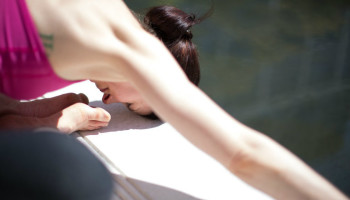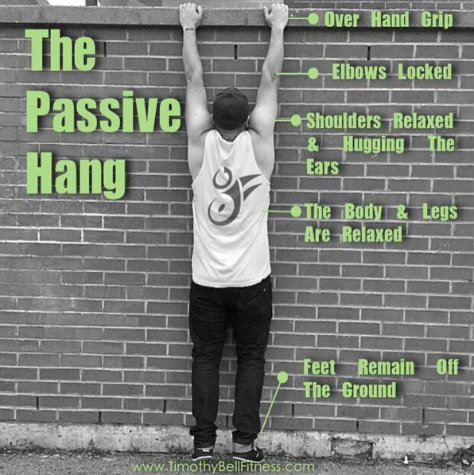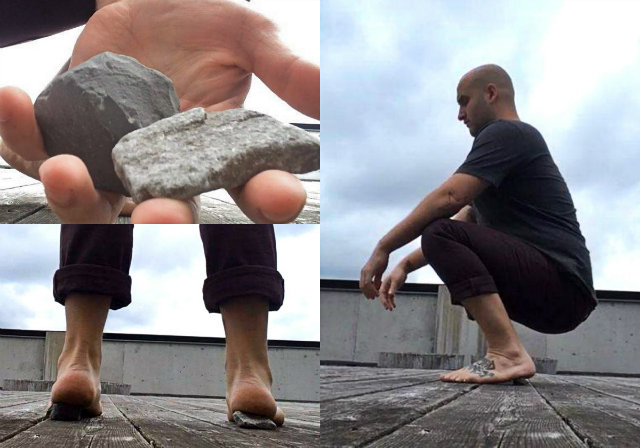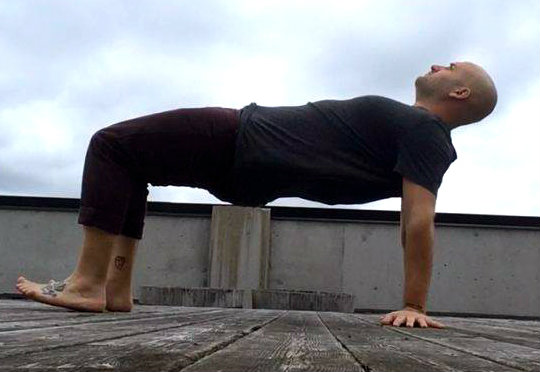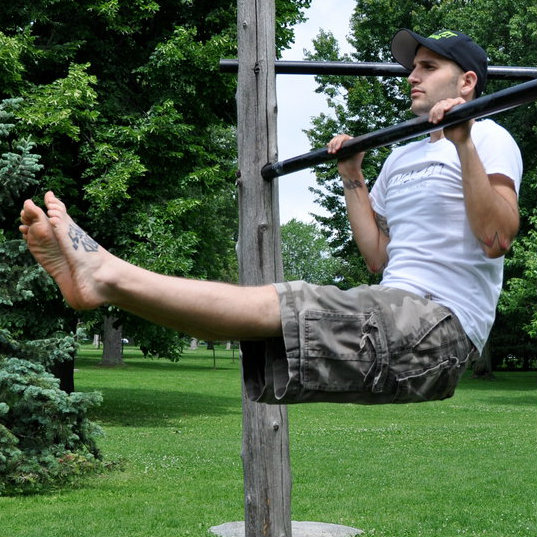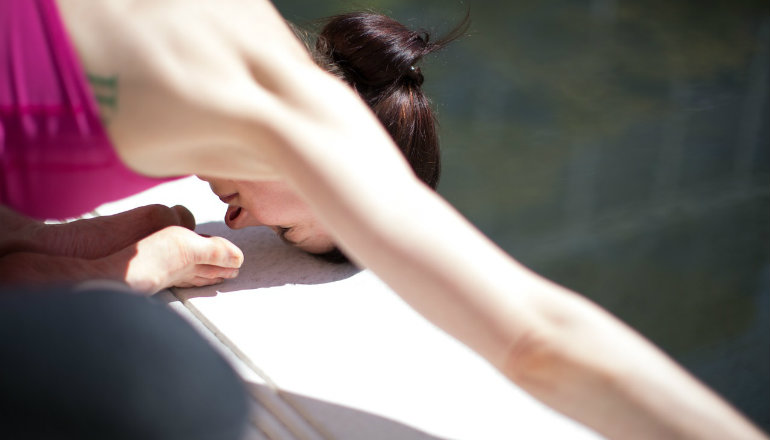 Reading Time: 7 minutes
Reading Time: 7 minutesIf you feel tight, immobile, and stiff – you’re not alone. Our modern lifestyles can leave us feeling aged beyond our actual years. Working a desk job, being inactive, and not moving more than a short walk here and there adds up. The result? A lack of mobility and a general feeling of stiffness in the body. When you lack mobility, your daily physical performance goes down, while your risk of injury goes up.
You don’t need to feel this way. There’s a simple way to regain your lost mobility. Eliminating the effects of modern living requires nothing more than some basic movement – and it only takes minutes each day. Today, I’ll detail four minimalist movements that will help you regain your mobility and restore youth to your body.
1. Joint Mobility
While it’s not exactly a single movement, joint mobility exercises are a great way to improve or maintain joint range of motion and warm up the body before workouts and daily activity. Watch this video for a full series of joint mobility exercises. You can stop and start the video and use it as a reminder of what movements are possible:
Your goal should be to move each joint in a controlled manner through a full range of motion without the use of momentum. Work from the top down. Start with the neck, then follow with the shoulders, elbows, wrists, ribs, spine, hips, knees, and finally the ankles. Never push through any pain you encounter. Move only as far as you can without becoming uncomfortable. Over time, your range of movement will improve.
The number of repetitions performed for each exercise depends on the individual. If you’re tight or immobile in one area, perform more reps. You can even use the old Russian method of using your age to determine the number of reps you perform. The older you are, the more reps you need.
Your Mobility Homework: These joint mobility exercises can be done every day and even multiple times during a day. In fact, the more you do them, the better. If you have time at work, take a minute to stand up and go through a few at a time. When you’re home at night, turn commercial breaks into mobility time. Minutes accumulated here and there will add up to a big change in how your joints and body feel.
2. Hanging
Most people have poor range of motion in their shoulders. Just about every new client I meet can’t raise their arms overhead without arching their backs. It’s usually due to tight lats and pecs, a side effect of sitting too much and moving too little.
If you’re arching your back as your raise your arms overhead, you’re placing a lot of pressure on your spine. That excessive pressure can cause lower back pain or injury. The lack of mobility in your shoulder might also eventually lead to general shoulder pain or injury. When your movement isn’t up to par, simple things like throwing a ball or lifting a box overhead could be a recipe for disaster.
Download our free e-book for 11 stretches everyone who sits at a desk should be doing!
How do we fix this lack of range of motion? It’s quite simple – we hang. The act of hanging passively from a pull-up bar (or tree branch, gymnastics rings, or anything else that’s sturdy enough to hold your body weight) helps stretch the lats and pecs and will quickly improve movement in your shoulders. If you’re experiencing shoulder pain that’s not from a dislocation or other injury, it could be caused by your lack of mobility. The passive hang can help get you out of pain. Hanging also helps build grip strength, decompresses the spine, opens the ribs, and feels great.
Your Mobility Homework: Hang intermittently throughout the day and hit a timer each time you do. Your goal is to hang for seven or more minutes, accumulated over the course of the day. Set up a pull-up bar or set of gymnastics rings in your office and at home, and every time you walk by them – hang. When you’ve finished working out – hang for a couple sets. Give this practice two weeks, and you’ll see your shoulder range of motion improve drastically.
3. Resting Squat
Sitting in a squat is the common resting position for people all over the world. Yet, here in North America, most people have trouble squatting to parallel, let alone sitting in a deep squat.
The squat is not only a basic human movement, it’s essential. You squat to sit down and get up, to pick things up, or to get up off the floor. The ability to squat fully indicates you have healthy knees, ankles, and hips. If you can’t squat to depth, there’s a mobility issue with one or all of these areas. Over time, that lack of mobility will make simple daily tasks difficult or impossible. Think about it: being able to stand up from a chair on your own or get up from a slip to floor could mean a major difference in your quality of life, particularly as you age.
We’re all born with the ability to squat to depth. Look at any child in the grocery store or waiting at the bus stop. If they see something interesting on the ground and want to get a better look, they drop into a perfect squat. You were no different. It’s just that over the course of your life, you stopped moving as much and lost that ability. Now, tight hamstrings, hips, and ankles prevent you from getting all the way down. And weak glutes won’t allow you to stand back up without compromising the movement.
Don’t fret, though. You can open up those tight areas, and it’s not terribly difficult. It just takes time. In fact, all you have to do is rest in your squat.
Your Mobility Homework: The goal, much like hanging, is to sit in a resting squat throughout the day for an accumulated time of ten to twenty minutes. Do this every day. Each time you squat, hit a timer on your phone and rest there for as long as you can comfortably. If you have trouble squatting deep, place an object under your heels such as a block of wood, books, or a stick. Rest in the bottom of the squat, shift your weight around, look around, and intermittently squeeze your glutes. If you’re uncomfortable, stop. With practice, it will become easier.
4. Table Top
The table top is an old exercise. It’s actually one of the “Five Rites,” a group of bodyweight exercises used by Tibetan monks to maintain their vitality and mobility. The monks can still run, jump, and squat well into their later life. If it’s good enough for them, it’s good enough for me and you.
The table top helps with issues that most people experience – tight hips, tight pecs, weak glutes, lack of scapular control (shoulder blades), and weak and/or tight wrists. If you work a desk job, these are all problems you likely encounter.
The table top isn’t difficult to perform, but there are some important details:
- Don’t arch your back while holding the table top
- Squeeze the heck out of your glutes the entire time
- Weight is pressed up through the heels, toes are lifted
- Abs are braced/slightly tensed
- Fingers are spread and pointing away from the midline of the body (pointing sideways)
- Shoulder blades are squeezed together, like you want to pinch a quarter between them
- Don’t tuck your chin or throw your head back
Your Mobility Homework: Hold the table top for as long as you’re comfortable. Repeat it through the day multiple times or whenever you’ve been sitting for long periods. The eventual goal is to be able to hold the table top for one minute, and to accumulate four minutes throughout the day.
Mobility as a Workout
Let me guess, you’re going to start performing these mobility exercises daily, but you’re also wondering if you could turn these into a training routine? Okay, we can do that:
- Warm up with some joint mobility like in the video.
- Perform each exercise listed below, back to back, without rest:
- Hanging – hold for a maximum comfortable hold
- Table Top – hold for a maximum comfortable hold and stop if form breaks down
- Resting Squat – hold for 1-2 minutes
- Run through the circuit 3-5 times depending on your time constraints
I know you can add these minimalist exercises into your daily life and training. With time, your body will begin to open up and reclaim its mobility. But even if you’re incorporating these exercises into a training plan, the goal is not to rush things. Take your time. Fitness is a journey and not a destination.
